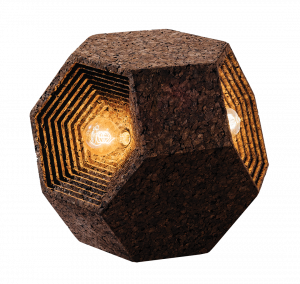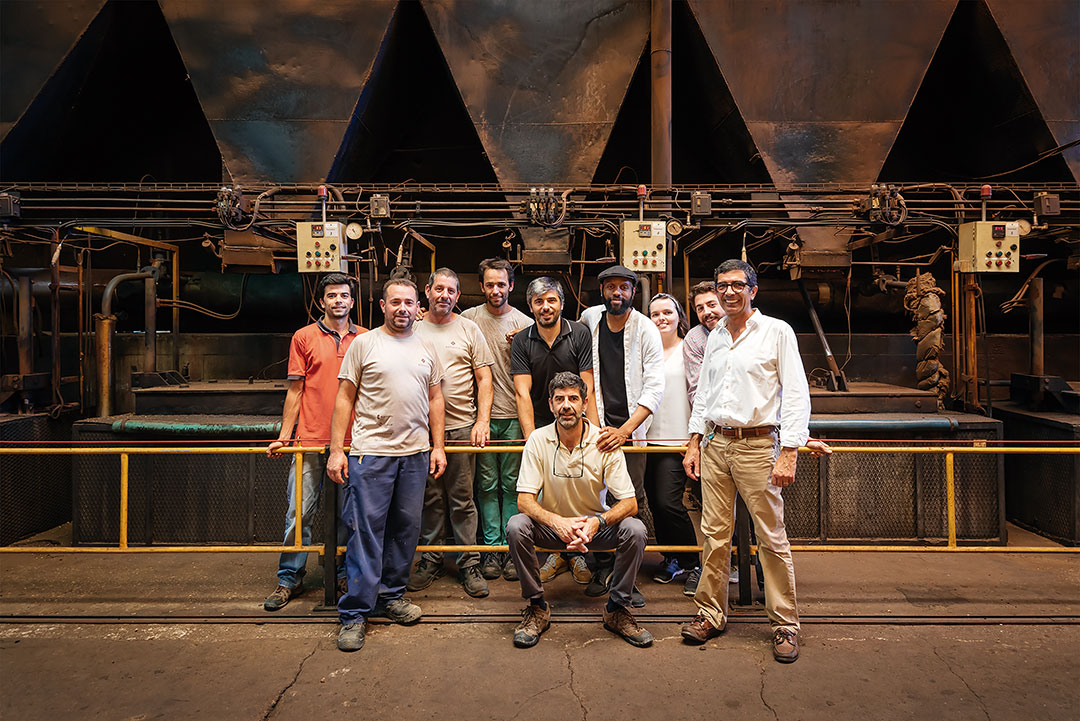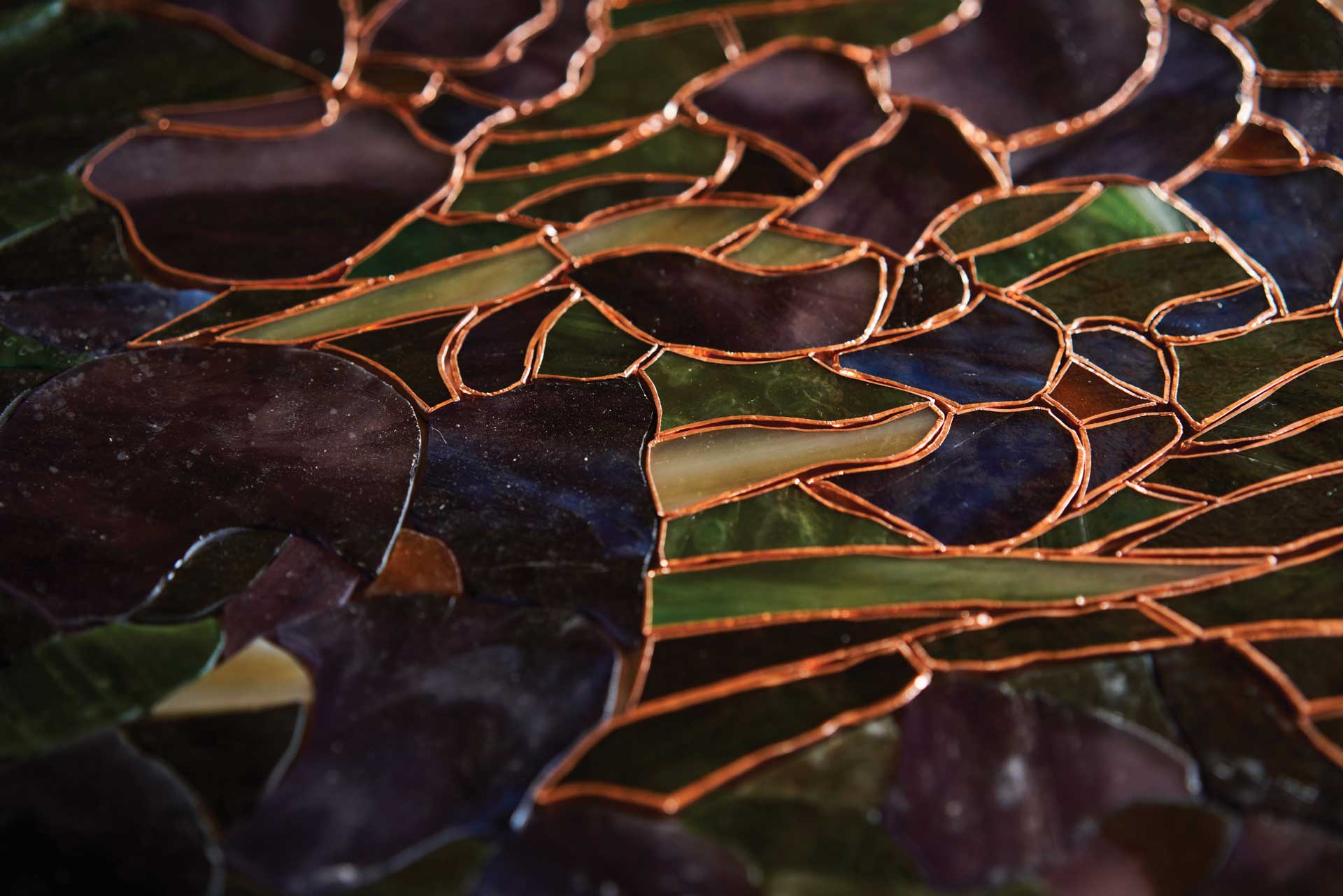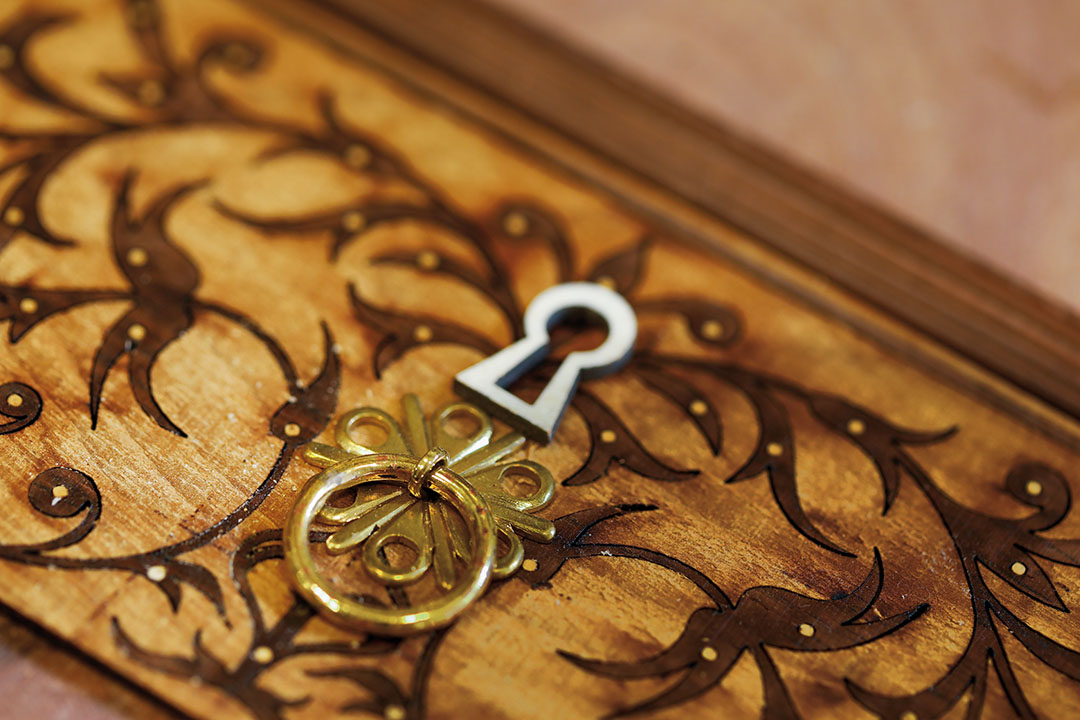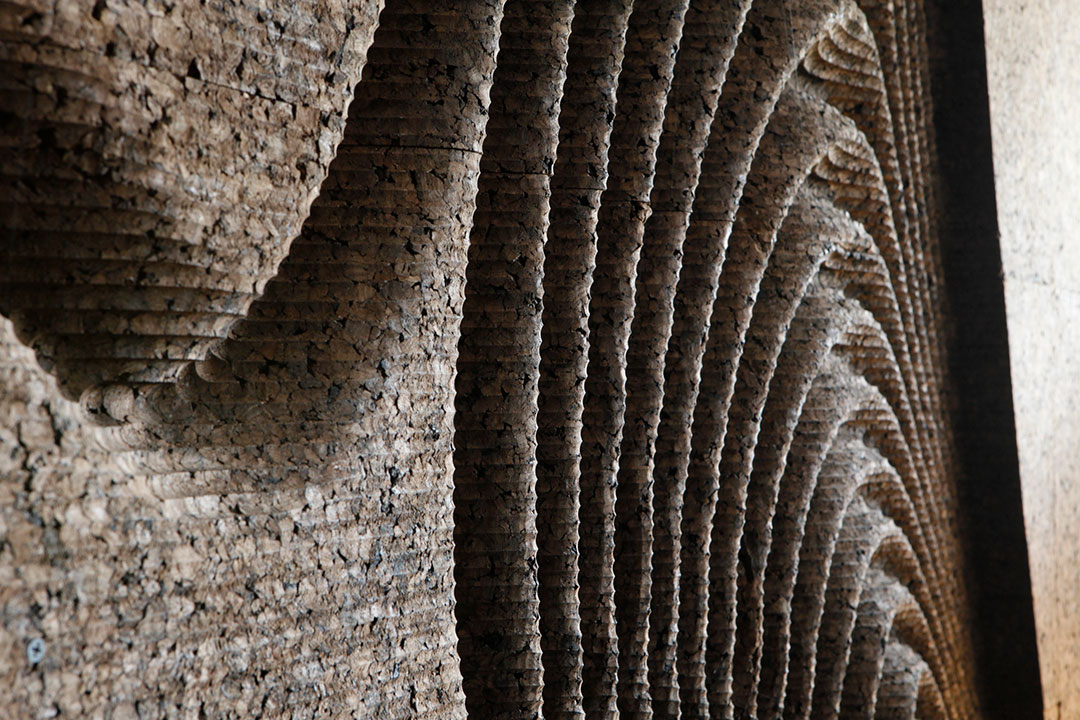
In Deep with Cork
A DESIGN FOR LIVES
“The eucalyptus is mine. The cork oak will be my grandson’s.” This Portuguese proverb says a lot about the love of a farmer for his family. “It takes 50 years to get yield from these trees”, explains Paulo Estrada, with whose generation the vision of his grandfather, Ernesto, started to bear the best fruit. Pointing to a particular cork oak, on the beginning of our way to the factory, he helps us with the calculations: “The production phase for this tree will start when the trunk reaches a 70 cm circumference. Then, it can only be harvested every nine years, the time it needs to heal its wounds and regenerate. And the third harvest (amadia) is the first to have the ideal properties for the production of quality corks.”
Having its roots in Abrantes, centre of Portugal, from where the landscape populated with the iconic tree embraces the south until it reaches the Algarve, Paulo’s father and his two brothers decided to set the industrial unit in the municipality, near the train station, and base the company activity on the production of expanded black cork agglomerate for construction’s thermic and acoustic insulation. Their raw material shows how groundbreaking they were at that time: back in 1966, they stuck with the cork that nobody wanted: “In that period, the cork extracted from the upper branches of the cork oak had no value, it was basically used to produce coal.” Its name, falca, was the inspiration behind the Sofalca (being “so” a word game with “só”, meaning “just” in English).

In 1974, a crisis triggered the climb of price of oil products, and the company was once again a pioneer: Sofalca installed the first mixed boiler plant in the cork sector in Portugal, replacing naphtha, as fuel, by biomass: “We had to pay to get rid of the production wastes, and since then, we’ve been transforming them into energy. We are 95% energetically self-sufficient and we have no waste in the factory. All the cork powder is used as biomass and all the grain is sold”, tells the CEO. The result is a unique and sustainable product exported mainly to Central Europe and Japan, whose difference is promptly revealed before our eyes by its chocolate-like tone. The magic is 100% natural: “When the water vapour passes through the blocs at a temperature of about 400 degrees, it drags the resin, leaving this black coloration. There is no glue, no ink.” The moment calls all senses, tangled up in the smoke. “Those tiny fragments of ember are wood. Wood burns, cork doesn’t, which proves its ability to resist high temperatures.”
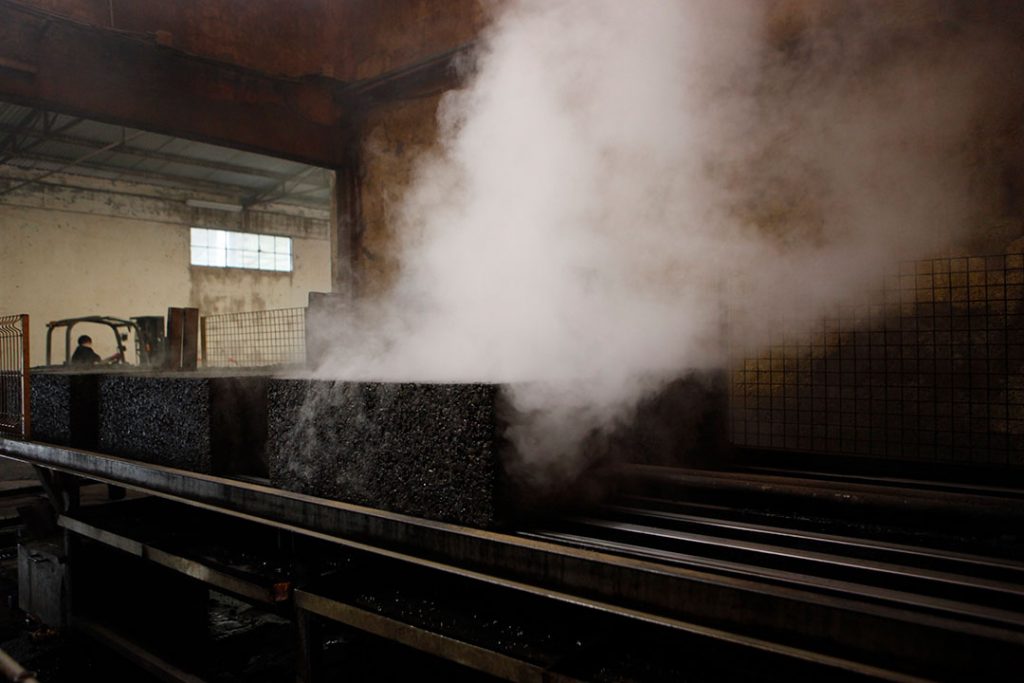
THE TREE HAS GROWN MORE BRANCHES
Despite Sofalca’s tremendous success, Paulo and his brothers António and Nuno couldn’t escape from their genes. Boldness runs in the family. Besides the business, as well as its values and mission, they inherited the constant need and desire of doing more and better from such an elastic and versatile product. In 2014, the company opened the doors to the design and decoration worlds with the creation of a contemporary furniture brand, Blackcork. The designer and art director Toni Grilo invited the talented new generation of Portuguese designers to develop the first collection of 2014, presented in the professional trade fair Maison et Objet, in France. The second collection was released in 2019. Toni Grilo sees its minimalist, cleansed style as an exercise of exhalation, more than an inspirational one: “I always have lots of ideas, I don’t look for them, it is pretty much the opposite. I have to stop them.” No matter where the fruition drives him, the brand’s backbone remains untouched: “We don’t want it to be trendy; we want it to be timeless. To last. Like cork itself.”
Sofalca installed the first mixed boiler plant in the cork sector in Portugal, replacing naphtha, as fuel, by biomass.
In 2015, Sofalca started to explore the symbiosis between its low-tech material with a high-tech process. This mix gave birth to Gencork, which transforms the expand cork agglomerate through generative design algorithms and advanced fabrication processes to add an artistic twist to traditional walls. The brand was born, unbeknownst to Paulo Estrada and his partner in this project, Digitalab, during the Arquiteturas Film Festival: “Sofalca gave the cork for us to develop a creative installation based on computing uses”, tells architect Brimet Silva, from the creative agency. Paulo was dazzled by the outcome: “When I saw that effect, I told them I was already imagining walls and walls timbered with that drawing.”
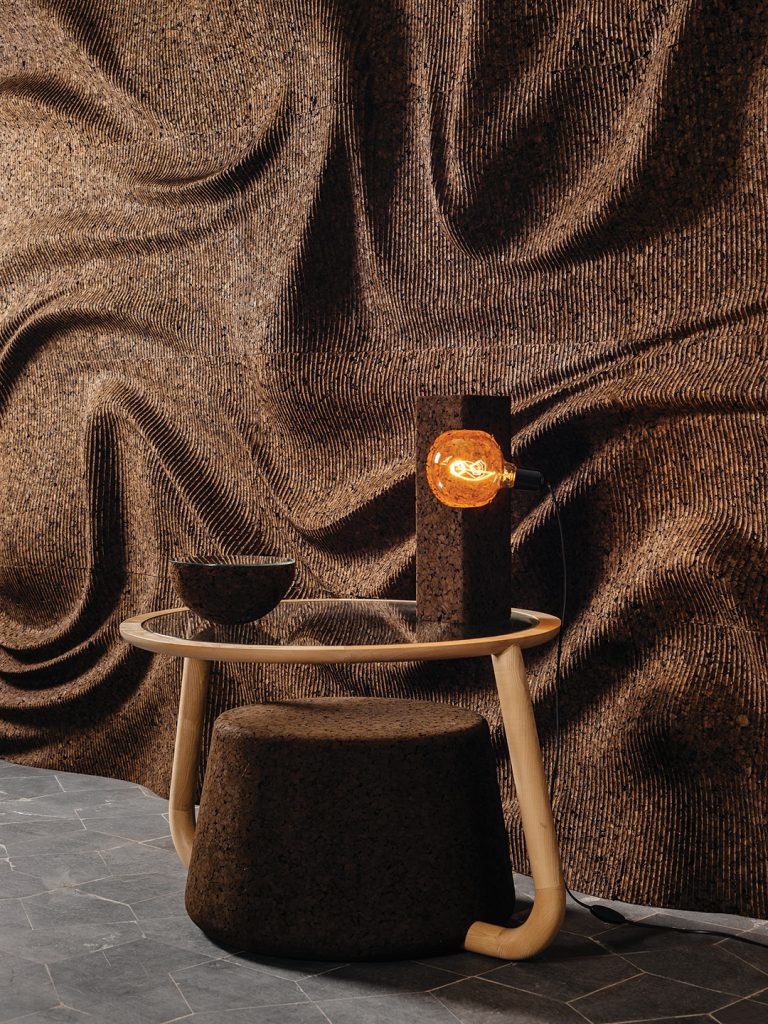
For Brimet, the communion between art and technology ennobled a material that was used to being hidden: “It plays the leading role now. Most of all, we want to create emotions out of it.” He believes “Gencork’s identity is so pronounced that nothing compares to it: we have been visiting fairs in Paris, Belgium, London, and there is something that happens anywhere we go, which is the “wow” factor. It leaves no one indifferent.” The brand has already won international awards, such as the Green Product Award 2016, Les Découvertes Awards, in Maison et Objet in Paris 2016, and the German Design Award 2017. Paulo Estrada says he is pleased to realise that “a product that, during 100 years had no evolution, has gained a new look, a layout able to perform things no one had ever imagined.” As a business man, he resisted the temptation of imposing his ideas to both brand’s professionals: “I rather be infused by their creativity.”
Both the table and the whirl-shaped wall are part of Blackcork and Gencork’s 2019 collection, respectively.
THE FOURTH GENERATION
“Cork has the ability of evoking memories. Its smell, for instance, someone said it resembled the smell his/her primary school’s walls”, recalls Paulo. “It generates comfort, and lets energy flow. It lets homes breathe, improving the well-being inside.” But there is room for this noble material to grow outside too. That will be the challenge of Sofalca’s next generation: “I think the future will be insulating with art, which also applies to the exterior of buildings. We have some work done in Portugal with cork replacing stone or wood and, ultimately, giving spaces a modern design that can be chosen according to the taste of each owner.”
